Beautiful Fish Caught in a Cast Net
QUESTION:
While throwing a cast net early one morning in October, I ended up with this little guy. I’ve been throwing a net in the same area of the Mississippi Gulf coast for decades but have never seen one of these. It almost looks like some sort of pomfret like those caught by my buddies who deep-drop, but their fish are always black or gray. Is this little dude lost, or is he just a shy local? Hope it’s not an invasive species, since I released him after the photos!
Capt. Sonny Schindler, Bay St. Louis, Mississippi
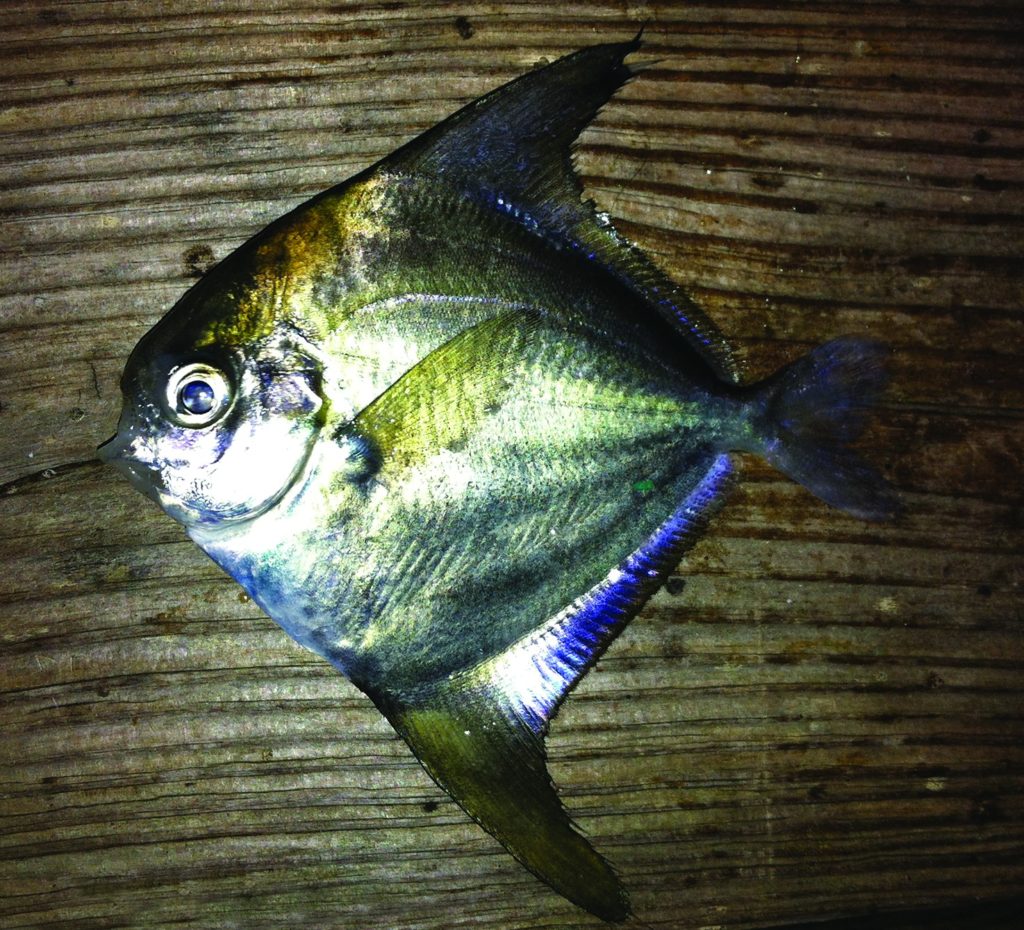
ANSWER:
Not to worry, Sonny: This is no invasive species. It’s a gorgeous little member of the butterfish family known as the harvestfish, Peprilus paru. The reason you’ve not seen one before is that they have tiny mouths and don’t take a hook. When these guys are small, they seek refuge among the venomous tentacles of jellyfish, and are able to avoid contact by their uncannily agile swimming ability. But as they get older and larger, they abandon their hosts and form larger schools. Harvestfish range from New England to Argentina in the Atlantic. A small species, they top off at about 8 or 9 inches. Harvestfish feed on shelled crustaceans, and have a special grinding section of their throat that makes the hard parts of their prey palatable. Their close cousin, the butterfish, has some commercial value and is often exported in large quantities to Japan. Some harvest fish might be included in these catches.
— Bob Shipp
Wrasse With an Amazing Mouth
QUESTION:
I caught this fish in the far south of Thailand while fly-fishing from a kayak over a shallow area of reef. What really surprised me was the long, extendable mouth that folds neatly away. I’d love to know the ID of this fish, please, and what particular feeding niche it utilizes with that peculiar mouth. Thanks!
Paul Sharman, West Sussex, United Kingdom
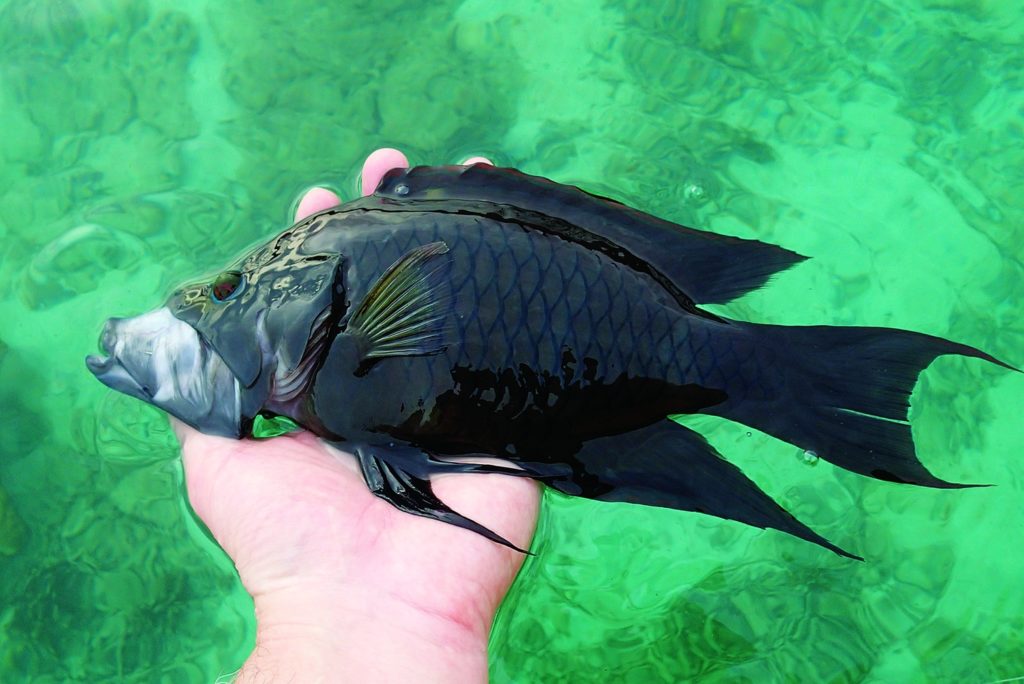
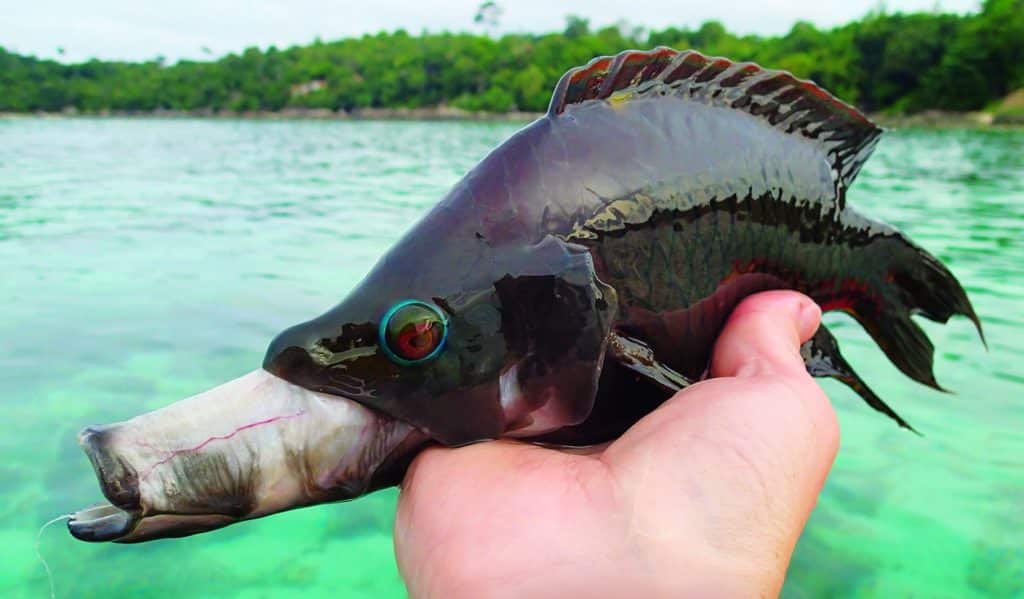
ANSWER:
This cool fish is a slingjaw wrasse (Epibulus insidiator) or telescope fish. As the name suggests, unlike most other wrasses, both upper and lower jaws are extremely protrusible, allowing the species to evolve a “sling jaw” that transforms into a long tube to facilitate accurate suction feeding for a variety of prey, including shrimp, crabs, and smaller fishes. When not in use, the jaw, as you note, folds out of the way, under the head. Slingjaws are reasonably common in depths of 3 to 120 feet over coral reefs in the Indo-Pacific region, from the Red Sea and East Africa east to the Hawaiian Islands and French Polynesia, as far north as southern Japan, and as far south as northern Australia.
Typical of other wrasses, the coloration of this hermaphroditic species varies, with color changes related to the different maturation stages of the life cycle (they mature first as females before turning into males). Smaller juveniles are dark brown with several thin vertical white stripes. This changes to a uniform brown or yellow upon maturation to the “initial phase,” so your fish was a female in the dark brown, initial-phase color pattern, Paul.
Small groups of females typically occur with one large “terminal phase” male fish, the latter having a distinctive white head with a single diagonal black line through the eye, black flanks with one vertical light green stripe and an orange region below the dorsal fin. If the male is removed from the harem, the next-largest female will soon take its place, changing sex and adopting the terminal-phase color pattern. E. insidiator can grow to around 16 inches long and around 5 pounds in weight. They’re known to be quite territorial, with home ranges as large as a quarter of an acre. No slingjaws have been entered for all-tackle record status with the IGFA, so yours could have been the world record!
— Ben Diggles
A Grouper’s Color Phases
QUESTION:
Take a look at these photos of a leopard grouper (locally known as cabrilla) and a golden grouper: Supposedly these are the same species. Is this true? If so what makes them change their color? Has one ever been caught while in the process of changing from spotted brown to golden/orange? We often catch the leopard grouper by casting diving plugs into rocky shorelines and around our local islands, but the goldens are a rare sight.
Capt. Fernando PQ Almada, San Carlos, Mexico
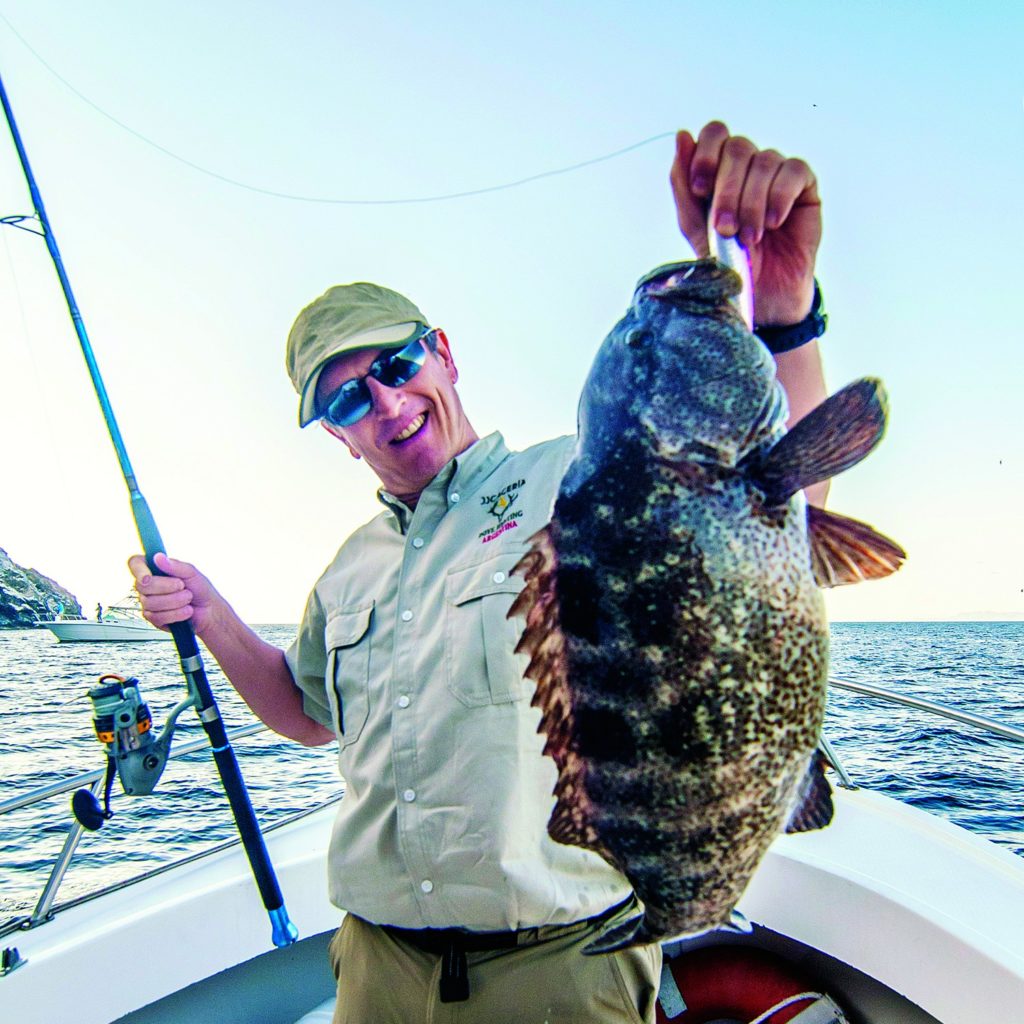
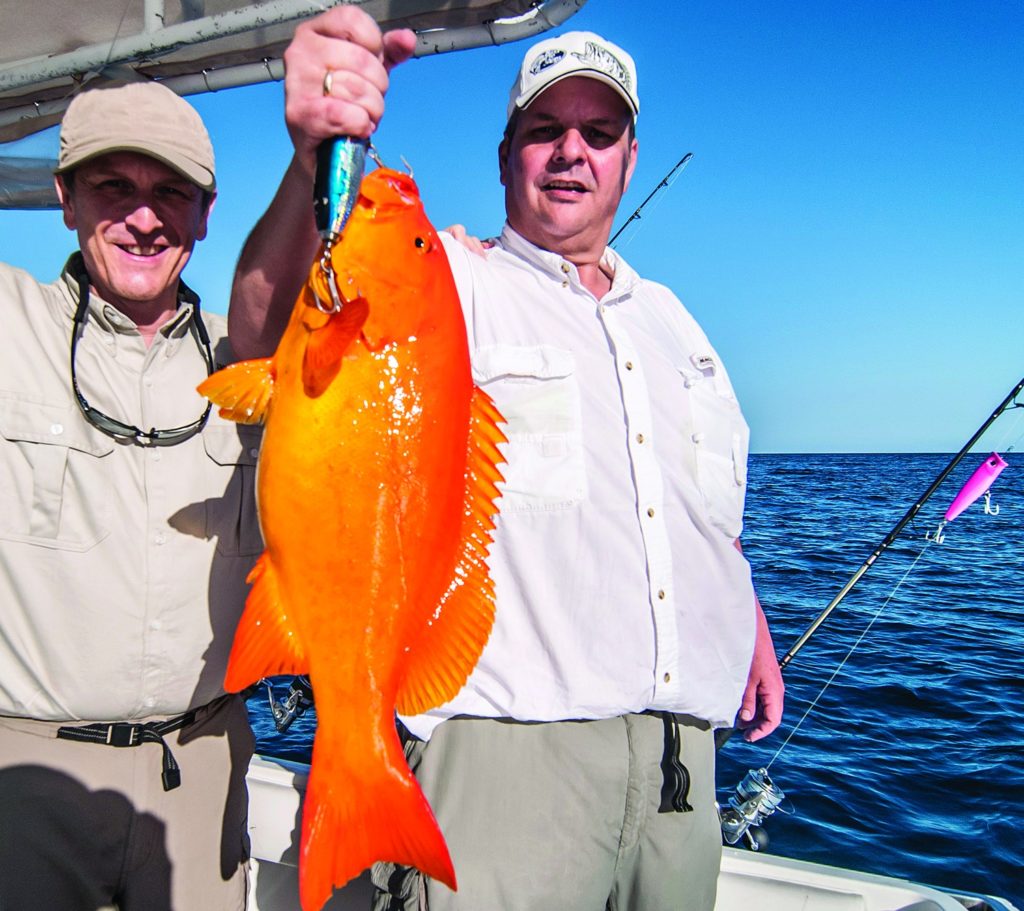
ANSWER:
Hi, Fernando. Yes, leopard groupers, Mycteroperca rosacea, do come in two flavors: spotted and golden-orange. No scientist has spent much time looking at this phenomenon, but for as much of the answer as anyone knows, I turned to one of the gurus of grouper, Matt Craig, at the National Marine Fisheries Service, and this is what we know. First, both males and females can be golden; in this golden phase, they can be of any size; and, undramatically, golden ones are in no way dominant over the “normal” ones, nor do they behave differently. While less common than the usual brown phase, goldens are not particularly rare. The golden color is definitely genetic, so those can’t change to a brown color or vice versa. Matt reports that he has not seen any clear benefit of the golden color pattern (for instance golden ones aren’t more successful during mating season). The bottom line: It’s just not clear why these two patterns have evolved.
— Milton Love
This Marine Fish Is a Poop Junkie
QUESTION:
I caught this fish in 80 feet of water on the edge of the reef in Marathon, Florida, in early August, a few days before the full moon. A school of these swarmed my chum line, and upon bringing them into the boat, it was obvious they had snapper-like teeth. I’ve shared these pictures with about a dozen friends, yet no one has been able to identify this species. Could you help in my species-identification mystery?
Chris Birch, West Palm Beach, Florida
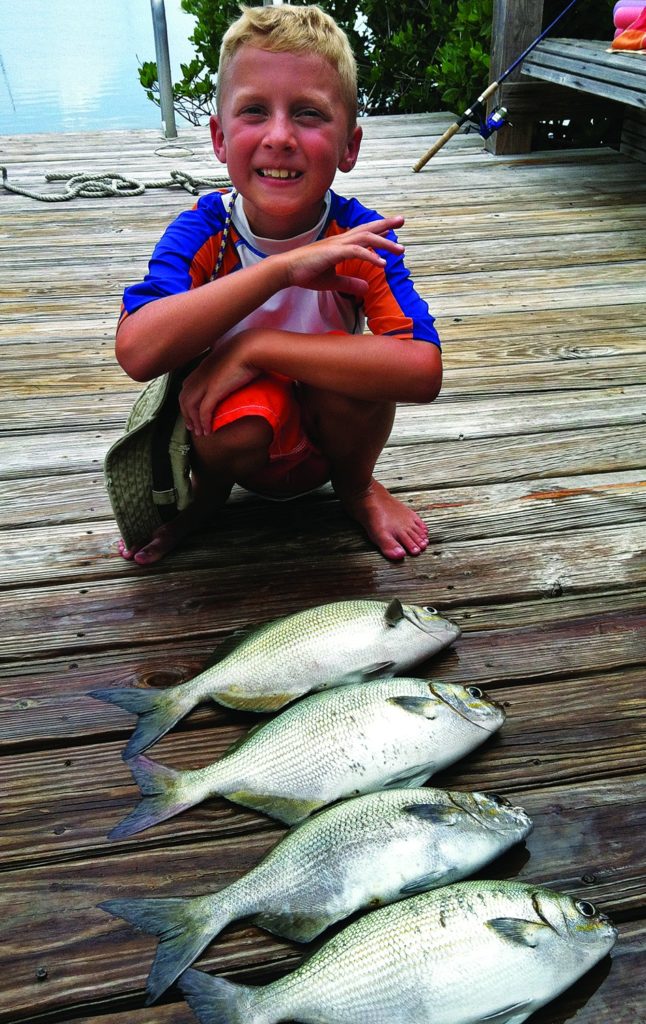
ANSWER:
It’s either a Bermuda chub, Kyphosus sectatrix, or a yellow chub, K. incisor, two of approximately 40 species of sea chubs (members of the family Kyphosidae) found worldwide. The two sea chubs that occur in our area are quite similar and have nearly identical distributions, ranging from Cape Cod through Brazil, and also in the eastern Atlantic. Additionally, both can reach lengths of between 2 and 3 feet. Although they feed largely on algae and small, benthic crustaceans, they’re certainly not restricted to these food items. I’ve seen hundreds of sea chubs rush to the side of a boat when visitors to Buck Island Reef National Monument off St. Croix, in the U.S. Virgin Islands, threw chunks of bread into the water, and Bermuda chubs have been observed to consume dolphin feces and vomit. Anglers fishing around offshore Gulf oil rigs observe pack-scavenging by chubs that gobble up anything and everything from workers on the rigs.
I’ve never eaten a sea chub and, especially given their aforementioned feeding habits, have little desire to; they’re known for having soft flesh and a strong taste. Still, sea chubs are sometimes found in fish markets, and one Pacific species is a common food fish in the Hawaiian Islands. FishBase, referring to the entire family, states that sea chubs are “food fish in some areas, trash fish in others.” Dr. Ernest H. Williams from the University of Puerto Rico’s Department of Marine Sciences notes that sea chub flesh spoils quickly if not gutted promptly and handled properly.
Two marine biologist colleagues, who prefer to remain anonymous, expressed their thoughts on the subject in a tongue-in-cheek email to me this way:
“Bermuda chub (alternate names: sewer fish, slimedog, puke fish, oozer). Edibility: Not possible to test. This species is known to emit foul odor upon capture and, when left on board, it quickly emits an intoxicating greenish cloud that, when inhaled, can be fatal. Historical, mostly anecdotal, accounts indicate that attempts have been made by humans to consume this species, although there is no evidence that these cultures still exist. Aged chubs are known to be used in warfare as ‘black death’ for their sinister reputation as sacks of black fluid that initially cause skin lesions, followed by convulsions and suffocation, according to rare survivor accounts. Use of chub-bombs, or ‘chubbers,’ is outlawed by the Geneva Convention as a banned substance due to their horrific toll on human populations.”
— Ray Waldner








